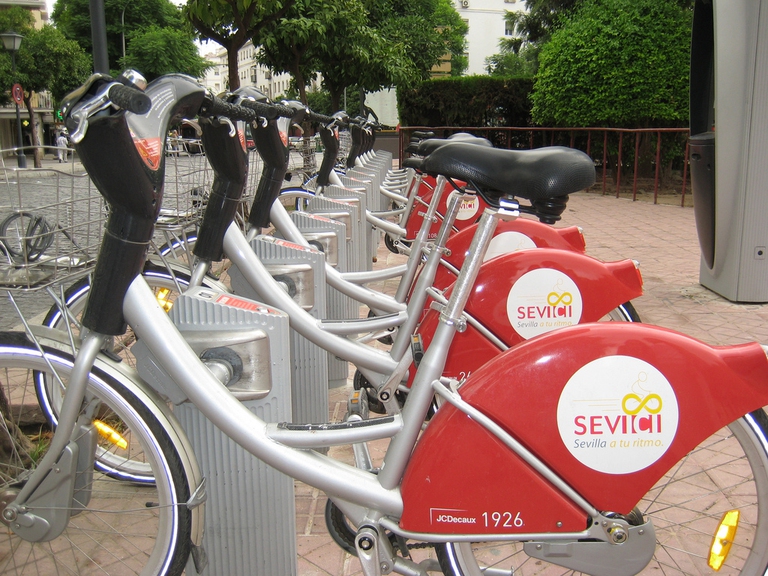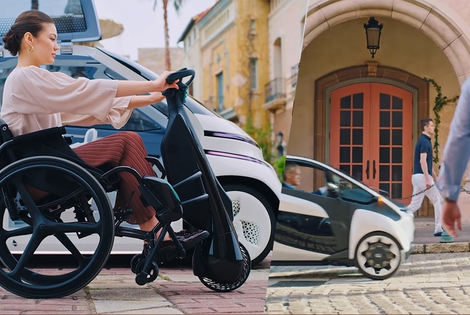
Milan has announced one of Europe’s most ambitious mobility schemes, known as Strade Aperte (open roads). Its goal is to reduce cars in phase 2 of the lockdown by increasing bike lanes and pedestrian areas.
Seville dreams big about cycling mobility, in the wake of the actions undertaken by cities like Nantes or Lubiana; so, not exclusively Northern Europe can invest adequately in bicycles as the means of transport of the future. Figures on bike infrastructures in Seville From 2006 to 2011, in the Spanish city the number of cyclists increased tenfold,
Seville dreams big about cycling mobility, in the wake of the actions undertaken by cities like Nantes or Lubiana; so, not exclusively Northern Europe can invest adequately in bicycles as the means of transport of the future.
From 2006 to 2011, in the Spanish city the number of cyclists increased tenfold, while between 2004 and 2010 the kilometres of cycling lanes increased tenfold. Now, it’s possible to safely pass through the streets of the city by bike and the cycling lanes have been built in large boulevards with wide pavements.
Cycling lanes are delimited by metal studs with the symbol of a bicycle. There’s a sign in the lane pointing out when a cycling road narrows. There are cycling lanes where pedestrians have right of way and lights where bicycles have the priority, as well as safer stops against thefts.
 SeVici, Seville’s bike sharing. Photo by Cayetano published on Flickr with Creative Commons 2.0 license
SeVici, Seville’s bike sharing. Photo by Cayetano published on Flickr with Creative Commons 2.0 license
There are also the bike sharing platform SeVici, a bike bus service, pedestrian lanes and limited traffic zones. Even the University of Seville has a service of folding bicycle loan, with a fleet of more than 400 bicycles. Intermodality has been strengthen through Seville’s underground network.
The Andalusian investment plan on cycling moility from 2014 to 2020 disposes of 420 million euros to build further cycling lanes that connect the city centre with nearby municipalities.
Thanks to these measures, Seville ranked fourth in the 2013 Copenhagenhize ranking, becoming southern Europe’s capital of bicycles and ranking tenth in the 2014 ranking. 2013 was also the year when the highest number of bicycles and cars were sold in Spain.
Seville’s project is successful since it’s convincing other Andalusian cities to adopt similar measures. A useful incentive for all southern Europe countries, including Italy.
Siamo anche su WhatsApp. Segui il canale ufficiale LifeGate per restare aggiornata, aggiornato sulle ultime notizie e sulle nostre attività.
![]()
Quest'opera è distribuita con Licenza Creative Commons Attribuzione - Non commerciale - Non opere derivate 4.0 Internazionale.
Milan has announced one of Europe’s most ambitious mobility schemes, known as Strade Aperte (open roads). Its goal is to reduce cars in phase 2 of the lockdown by increasing bike lanes and pedestrian areas.
Formula 1, the world’s most important auto racing championship, has decided to turn the page and aim for carbon neutrality with the support of its teams, drivers and the whole racing circus.
Toyota and LifeGate began telling the story of hybrid mobility back in 2006, now, on the road to the Tokyo 2020 Olympics, they’re still treading the path of sustainable mobility. Here are the main steps of the journey.
Germany’s first solar bicycle lane could be the prototype for the roads of the future. The photovoltaic tiles melt snow and ice, and are capable of absorbing noise.
The Vespa is back in an electric version. Production has just started and the first models can be reserved online starting from October.
The city of Utrecht, in the Netherlands, is home to a bridge for cycling and walking that stretches over roof garden of a Montessori school. This project enhances practicality and will allow families to bring children to school by bike, passing through green areas. Despite their functionality, bridges are often seen as an infrastructure that is
The Lego hair bike helmet is the latest Internet craze. For now it’s just a prototype but production on a large scale will probably start soon.
Just as fires often give way to new growth, after the Dieselgate scandal, which saw Volkswagen cheating on US emission rules, the German car manufacturer radically changed course, beginning to focus on sustainable mobility. The German car company aims to propose thirty zero-emission models and produce at least one million battery electric vehicles by 2025. An ambitious mission
Sustainable, two-wheel mobility is triumphing in Copenhagen. After years of investments, policies, and infrastructural changes, bikes now outnumber cars in the city centre. The website Copenhagenize has released data linked to the number of vehicles entering the city centre, which are monitored by the city’s administration on a daily basis. Last year, 265,700 bikes have entered







